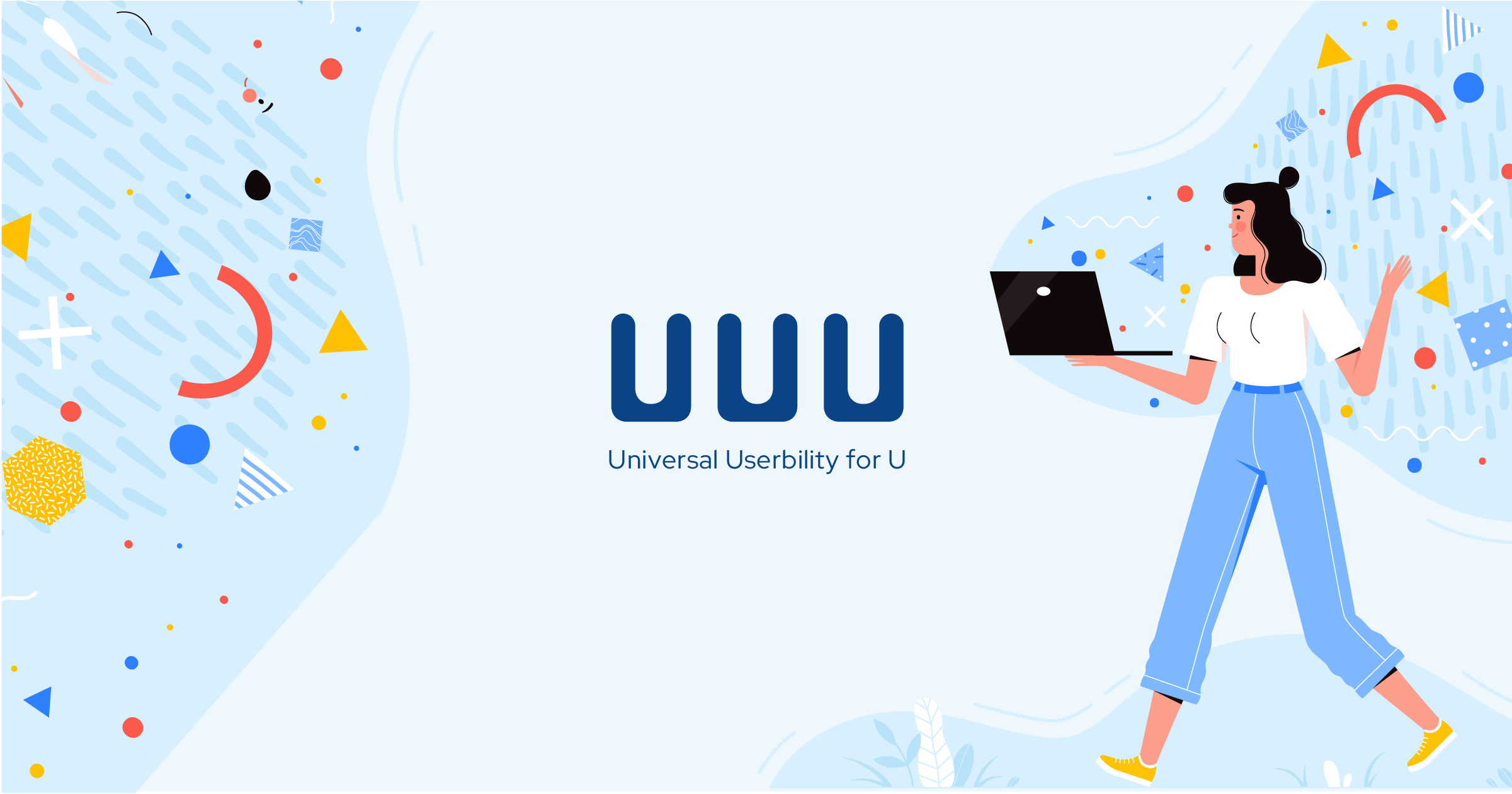*This article is an English translation of a Japanese article.
In recent years, web accessibility has become an increasingly vital focus in web development. Ensuring accessibility for users with visual or auditory impairments, older adults, or users with limited browsing environments not only enhances usability but also expands business opportunities. However, implementing accessibility can be challenging, requiring specialized knowledge and substantial time investment.
UUU’s new Web Accessibility Assistance Tool addresses this need by offering an easy-to-use solution that allows anyone with basic HTML skills to make their websites accessible effectively and efficiently.
What is UUU’s Web Accessibility Assistance Tool?
UUU’s tool simplifies the accessibility process by automatically transforming HTML code to meet accessibility standards. Designed for web development companies and freelance designers, it facilitates high-quality accessibility adjustments in minimal time.
The tool’s standout feature is its ability to automatically apply essential ARIA attributes along with other critical HTML elements and supportive attributes. Let’s explore its features and benefits in more detail.
Adding ARIA Attributes
UUU’s tool automatically integrates essential ARIA (Accessible Rich Internet Applications) attributes into HTML code. ARIA attributes are critical for helping screen readers convey content accurately to users.
For example, the tool will automatically add ARIA attributes in cases such as:
- aria-label and aria-labelledby for accessible link and button labeling, ensuring screen readers can accurately interpret these elements.
- aria-hidden to hide unnecessary information from screen readers while keeping it visible on screen, reducing cognitive load for users.
The automation of these ARIA attributes significantly contributes to meeting WCAG 2.1 accessibility standards, making UUU’s tool invaluable for accessibility compliance.
Adding Supporting Attributes to Input Elements
The tool also enhances accessibility for form elements, automatically adding appropriate supporting attributes to input elements to facilitate user interaction. Here’s how it works:
- Label Tag Association: When missing, the tool adds label tags with for attributes to input fields, helping screen reader users understand the input fields’ purpose.
- Placeholder Optimization: If a placeholder is vague or missing, the tool adjusts it to be more visually and contextually meaningful.
- Type Attribute Optimization: It assigns specific input types, like type=“date” for dates or type=“email” for email fields, allowing browsers and assistive technologies to interpret the field correctly and provide suitable inputs.
These supportive attributes improve the usability of forms and significantly enhance the user experience.
Automatic Tag Addition and Correction
Beyond ARIA attributes, UUU’s tool can also detect missing semantic elements and add or correct HTML tags. By automatically inserting appropriate tags, it ensures a well-structured and accessible webpage.
Key Features of UUU’s Tool
UUU’s accessibility tool boasts many other beneficial features beyond core accessibility functions:
-
Real-Time Feedback
When HTML code is inputted, the tool instantly displays accessibility elements that are missing or need correction. This immediate feedback enables quick adjustments, streamlining the development process. -
Simple, User-Friendly Interface
The tool is highly intuitive, requiring no specialized training. With a few clicks, accessibility-compliant HTML is generated, eliminating complex setups or installations. -
Free Basic Access!
UUU’s accessibility tool offers core functions at no cost. While the tool utilizes the ChatGPT API, separate API usage fees apply, following a usage-based billing model that allows for flexible access.
Real-World Use Cases
This tool is highly beneficial in various development scenarios, such as:
-
Accessibility-Ready New Projects
Integrating this tool during the design phase allows for accessibility-focused development from the start. It’s especially helpful for sites with numerous forms or dynamic content, as the tool automatically optimizes the markup. -
Updating Existing Sites
For published sites, this tool enables quick accessibility improvements. By inputting the site’s code, the tool identifies and applies adjustments to meet accessibility standards, enhancing the user experience site-wide. -
Cost and Time Savings
For small development teams or freelancers, accessibility efforts can be resource-intensive. UUU’s tool significantly reduces this burden, allowing for swift compliance, which also reduces costs.
Who Will Benefit
-
Web Development Companies
With multiple ongoing projects, this tool offers a streamlined solution for easy accessibility implementation, saving time and costs while delivering high standards across all projects. -
Freelance Web Designers
Freelancers managing solo projects can easily implement accessibility features using UUU’s tool. The added accessibility value differentiates them from other designers, enhancing their services for clients. -
SEO-Driven Businesses
Accessibility improvements can also boost SEO. This tool is ideal for companies aiming to enhance both user experience and search visibility.
Try UUU’s Accessibility Tool
For more details and usage instructions, visit the UUU Landing Page. Explore the tool firsthand and experience its convenience. Don’t miss this chance to integrate accessibility into web projects and reach a broader audience with ease.
In Summary
UUU’s Web Accessibility Assistance Tool is essential for web developers and designers. It automatically applies ARIA attributes and optimizes HTML and input elements to enhance usability and SEO impact. Try it today and achieve high-quality accessibility affordably.
